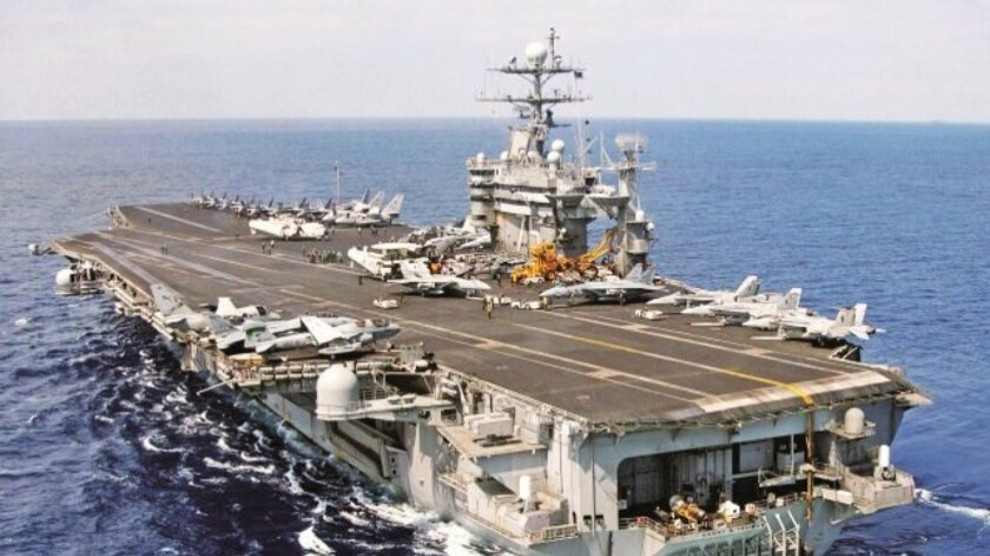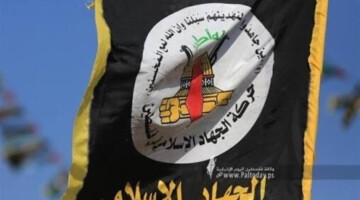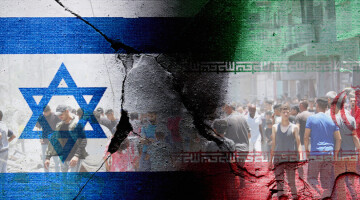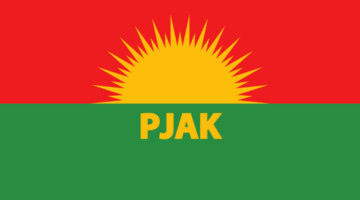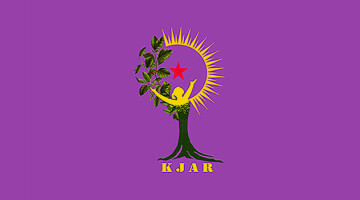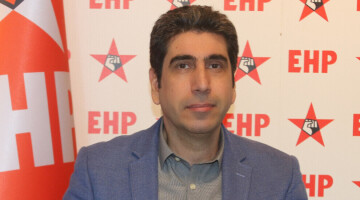In the days leading up to October 9, 1998, the Ankara regime was giving Damascus a clear message of cooperation through the intermediaries, while at the same time appealing to threats, blackmail and oppression. The Kurdish People's Leader was later to say about the conspirators: "it was an effort to create a plan with 99 percent no way out"
Not only Ankara, but also the capital of all Middle Eastern countries had lively times in those days. Some countries responded quickly, revealing of which country they would be in favor in a possible battle. The chronology of those critical 9 days leading up to October 9, 1998 is as follows:
September 30, 1998: The National Security Council (MGK in Turkish) convened under the chairmanship of Turkish President Süleyman Demirel. The meeting, which lasted for 6 hours and 10 minutes, had only one important topic: fight against Öcalan and the PKK. To the extent that it was reflected in the press in those days, it was stated that the diplomatic pressure on Syria had not yielded results and military options were discussed.
October 1, 1998: It was possible to easily understand the decision of the MGK in Demirel's opening speech at the National Assembly. Demirel, who plainly threatened Damascus, remarked: "I once again declare to the whole world that we reserve our right to respond to Syria, which has not given up its hostile attitude despite all our warnings and peaceful initiatives, and that our patience is about to run out."
October 2, 1998: Meanwhile the Turkish army increased its military concentration on the Hatay, Kilis and Antep lines of the Syrian border. Turkish Chief of General Staff Hüseyin Kıvrıkoğlu was also clearly announcing that there was an undeclared war with Syria.
October 3, 1998: An unexpected actor appeared in the Ankara-Damascus crisis. Egyptian President, Hosni Mubarak went to Saudi Arabia to discuss the Turkey-Syria tension. Mubarak, who met with King Fahd, said: “We must stop tension, we must keep it under control. I am ready to make all efforts in this direction in Ankara and Damascus.”
October 4, 1998: The second stop of Mubarak was Damascus, the capital of Syria. Mubarak, who met with Syrian President Hafez Al-Assad for two hours, left Syria without making any explanation to the journalists. However, Egypt's Foreign Minister Amr Musa continued to stay in Syria and said, "We are trying to open a dialogue channel for the solution of the problem."
October 5, 1998: Mubarak, who played a mediator role in the crisis, flew to Ankara. While Mubarak was in the air, Turkish Prime Minister Mesut Yilmaz said, "We want Abdullah Ocalan and other terrorists from Syria to be prosecuted." In the evening, Yılmaz met with Deputy Prime Minister Bülent Ecevit and Foreign Minister İsmail Cem to evaluate the situation.
October 6, 1998: Demirel submitted a file to Mubarak, which consisted of a “to-do list for Syria”, and then said "If our expectations are not realized, we will do what is necessary. You know better than us what is needed,". The same day Mubarak made the following statement to the Egyptian television: "We have offered ideas to Syria and Turkey to start a dialogue in order to resolve all issues between them".
October 7, 1998: An American ship loaded with Tomahawk missiles was sent to the Mediterranean shores. On the same day, a huge number of war and military aircraft landed at the US base in Incirlik-Turkey.
October 8, 1998: It was now Iran's turn to mediate in the crisis between Ankara and Damascus. Iranian Foreign Minister Kemal Harrazi, who first went to Damascus, moved to Ankara in the evening. According to the Turkish press, Demirel, who met with Harrazi, warned Iran: "Do not back Syria or you will also suffer.”
NATO’s MILITARY CONCENTRATION AND EXERCISE
While these developments on the Ankara-Damascus axis were taking place in those days, a remarkable development was also taking place in the Mediterranean. Although not planned beforehand, 11 NATO countries launched Turkey-part of a military drill called "Dynamic Mix 98" in Iskenderun near the Syrian border October 3, 1998. Furthermore 2,500 soldiers belonging to the US 2nd Marine Corps and Naval Forces were deployed in Iskenderun. Many observed that it was a preparation for war against Syria, which NATO would be a part of. Realizing these developments, Kurdish People's Leader Abdullah Öcalan was going to leave Syria on October 9. Ironically, that military exercise was going to be finished on October 15, and the US soldiers in Iskenderun would be withdrawn.
A CALL TO 'UNVEIL PALME MURDER'
The Kurdish People's Leader, who left Damascus by flight and was not heard from for a week, spoke to MED TV on the evening of October 15th. Abdullah Öcalan said: “First of all, I am happy to say that a comprehensive conspiracy imposed on the peoples of the Middle East, all Muslim countries and progressive humanity has failed for now”. Pointing out why MED-TV was blacked out on Friday, October 9, instead of any other day, Abdullah Öcalan explained that he would reveal how it was introduced as part of a general plan. The Kurdish People's Leader made connections between the conspiracy launched on October 9 against the Kurdish Freedom Movement and the murder of Swedish Prime Minister Olaf Palme in 1986 and made the following remarks: “A deliberate implementation of murder and the subsequent defamation of all Kurds were the work of this Gladio. For example, they said 'Order was given by Apo'. I would love to learn where this order came from. Hürriyet newspaper made headlines in those days, just as it makes nowadays: ‘We will announce this order tomorrow’, but the paper never did so. Had it been announced, the mask would have fallen off and the inside of the conspiracy would have been understood. I will ask dear viewers, our people, journalists and intellectuals to carefully deal with the Palme affair. Because we are faced with a situation similar to the conspiracy. Palme's elimination is really important and still not enlightened — not consciously illuminated."
IT WAS GOING TO START BY BOMBING THE PLACE WHERE I WAS
It was going to be announced years later that the Palme murder, which the Kurdish People's Leader wanted to be investigated, had no close or remote connection with the PKK. In June 2020, the Swedish Chief Prosecutor's Office officially reported that Palme's murder suspect was a Swedish citizen named Stig Engström, who died in 2000. Moreover, the Chief Prosecutor's Office said that "this incident has absolutely no connection with the PKK. It is nonsense to establish such a connection". In the same speech, the Kurdish People's Leader explained what happened on October 9 and the plot that failed as follows: “Actually we were in the air the day MED TV’s screen was blacked out. It was all for me: long-range flights, preparations on the ship, and missiles on the ship on the Mediterranean coast; the reason was to begin this war. It had to be determined at what time and in which place I was. Nothing else but Apo’s name was everywhere. The newspapers made headlines; 'Either Apo or war'. Actually, this was all true. Everything was knotted in me. The war will start but where is this man? Syrians were confused; They said, 'we don't know where he is'. The others said 'No, you will find and bring him'. 'Give us time' said Syria. They replied 'No, we don't have much time'. Time was over. Zero point was reached, it was not bearable anymore. Now the decision to war was final, but my whereabouts was very important.
Bombing was to take place on October 9. The place and hour were needed to for it to happen. Look at the rush of that day; Mesut Yılmaz said, ‘It's over, the last warning’. There was a genuine war decision, everyone knew that. The decision and full authority were obtained from the Assembly which read “one punch, one voice”. But coincidentally, there was something they did in the last three days to determine our point, place and time that day. This is a matter worth clarifying a little more. We indeed told some friends where we could be at that hour. I am not saying that I doubt about those friends, but we will investigate this. They were meant to fulfill a promise at that hour. As they did not fulfill that promise, they said, ‘You will act in a certain way at a definitive hour’. I did not accept this. 'Why do you say it will be like this at this hour? I said, 'I smell of conspiracy in this.'
This situation led to a serious discussion for an hour or two. Which was one hundred percent unexpected. This happened last Friday evening. We were astounded by such a discussion. We said 'so, you played some kind of game'. Why are you imposing this hour so persistently? You are also imposing the opposite. Both the hour and the reverse. We said, 'For us, this is definitely a conspiracy.' We realized our place and time depending on this place, not as they understood and expected, but differently. It was a chance, a coincidence, or a choice.
In other words, the hour when those missiles were sent did not come out as they expected and the place was not the place they expected. They had chosen two venues, and the plan did not work when both locations were not places we could go to. I can say that very clearly: If those hours had come true as they expected, it would mean a new regional war in the Middle East. Just as in Glancy's book 'Actions Leading to War', they would bomb that point where we were - which they knew as Syria. There were many sketches in the newspapers on how to bomb economic targets. I think based on these sketches, all of Syria's economic infrastructure and also the Presidential Palace were to be bombed. An unfinished operation. They took out the axes, they don't want to bury them in some way. "
PLAN B OF THE PLOTTERS WAS INTERPOL
Abdullah Öcalan stated that the missiles were not fired because his place could not be found and in his speech he said, ‘They will try again, they have such a determination’. The forces that plotted the conspiracy on October 9 also took into account the exit from Syria, and therefore, they issued an arrest warrant for the Kurdish People's Leader with the code "Urgent" in Interpol's Red Bulletin. On October 19, 1998, exactly 10 days after the conspiracy started, Abdullah Öcalan, who spoke to MED TV by telephone, asked: "Why was a red bulletin issued on October 9? Why this day, not just any other day? There is no better proof for an international conspiracy than this. They spread it all over the world, saying "Whatever country such a person enters, catch him immediately." They added an information that read "It could possibly be a checkout from Syria". We also had some directions of action on this date. "If he goes that place, the areas that will be bombed are the following, if he goes any other place, there are Interpol areas." So, this is what I call an effort to create a plan with 99 percent no way out.
The missiles were placed all the way from the Mediterranean to the borders of Syria. They stationed ten thousand soldiers in Zakho. KDP traitors also started attacking in Garê. They took such measures, all of them are documented. They issued an international red bulletin and they will supposedly keep me wherever I go. So, where do we go in the world? To get rid of these, one has to go to outer space or the moon. It is such a conspiracy style that there is no chance of getting rid of it. "
In the same speech, the Kurdish People's Leader explained how he was saved as follows: “Of course, not everything happened as they planned. No matter how sophisticated they may be, if one is careful and does not give up cautions, a way out can be found. Here I can say; we live and we will make our struggle even more solid. They will supposedly shoot me, hold me, using all the budget. They despised the peoples of Turkey that much and they are still after me. It has never been like that neither in tribal rules, nor in the age of cannibals.”
RELATED NEWS:

